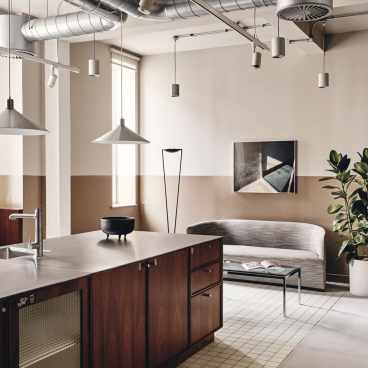Our top spots at New Designers 2024: Part One & Two.

Eleanor MacMilllan: BIO-ACCESS
After an inspirational visit to New Designers Part One and Two, where we were immersed in material exploration courtesy of new graduates from the UK and beyond, we have digested and pulled together some of our favourite projects.
We had lots of inspiring conversations into what the CMF future may hold, and came away feeling buoyed by the passion demonstrated by these young people to influence the industry in a positive way. From bio-textiles to jewellery created from surplus material leftover from fellow student projects, if there was one message that rang loud and clear it was that these new graduates - our future designers - will not accept or contribute to unsustainable practice.
Perhaps most stand-out was the drive to not only work with natural materials but to actively collaborate with them - exploring the assets of matter such as seaweed or peel and then moulding them to fit with a specific aesthetic intention. Whether that be colour, texture or finish. As long standing champions of biomaterial design, it was music to our ears.
Below is a snapshot of the designers that stood out for their dedication to forging new pathways for the future of materiality, from both parts of the show, and ND Selects - curated by Louisa Pacifico, founder of Future Icons.
Part One
Cadi Williams: Loughborough University
"The year is 1,002,024. Planet Earth one million years from now. Human civilisation collapsed long ago; fungi dominate Earth’s new hierarchy and thrive on the mess left by humanity. Human habitation has been reclaimed by nature; Homo sapiens have been claimed by nature. Homo sapiens are critically endangered; the few organisms left exist in symbiosis with fungi, lichen and algae."
This is the narrative crafted by Cadi Williams to accompany her graduate project, Symbiocene. Through combining biomaterials, hand embroidery and digital embroidery with pattern cutting and construction, she has created a collection that can be worn in the year 2024 as couture accessories, or used to represent futuristic living organisms much further down the line in 1,002,024.
A core part of Cadi's research for Symbiocene led her to create her own biomaterial, ‘fruit leather' - repurposing food waste from her student house. The material is 100% biodegradable, made by blending and dehydrating a mixture of orange and banana waste, water and plain flour.
Discover more and follow Cadi on Instagram here.
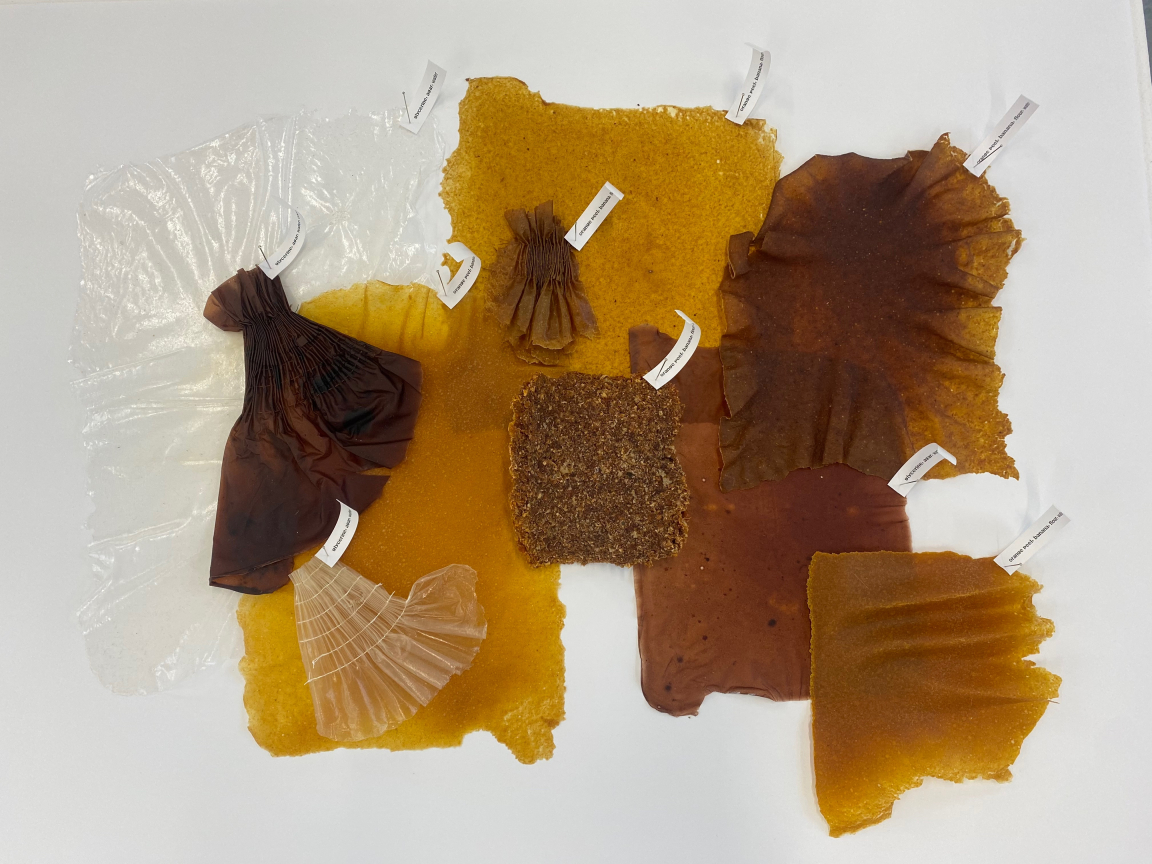
Cadi Williams: Symbiocene

Cadi Williams: Symbiocene
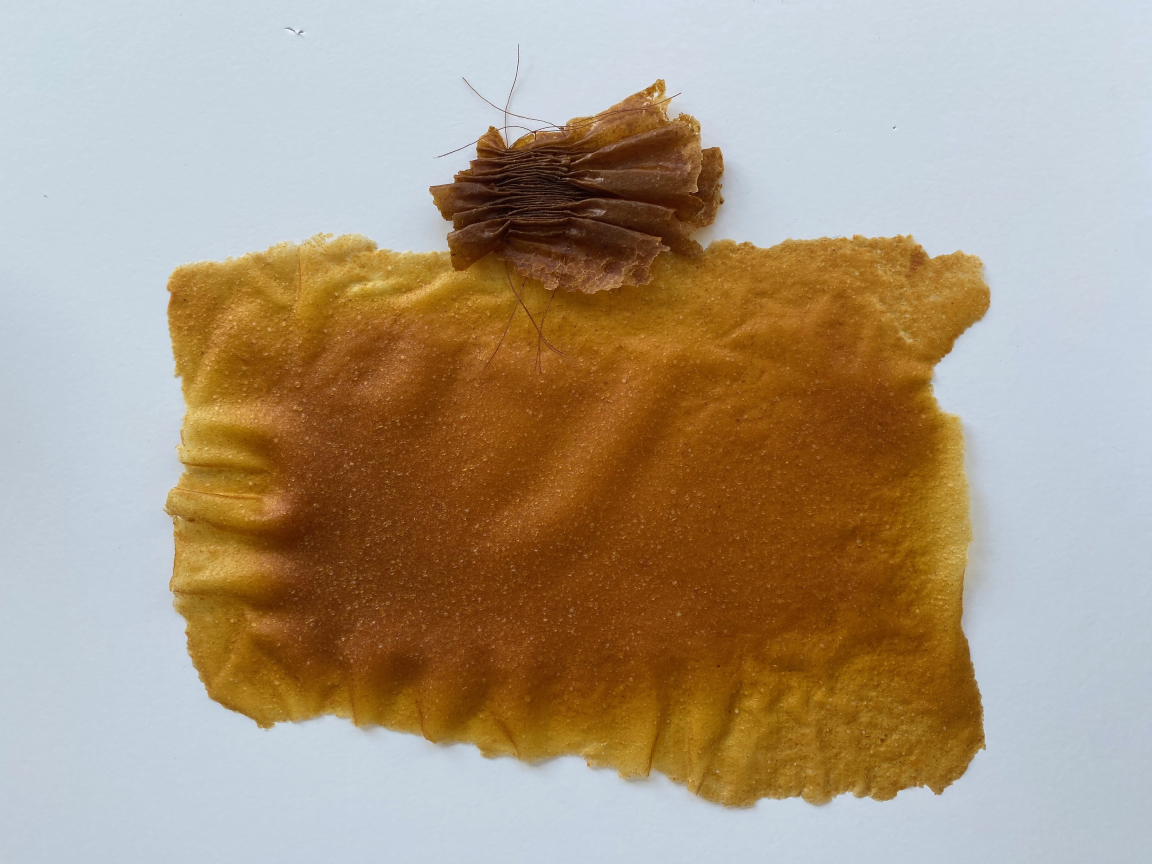
Cadi Williams: Symbiocene
Eleanor MacMilllan: Birmingham University
BIO-ACCESS by Eleanor MacMillan is a zero-waste project and corresponding publication. Setting herself the challenge to create a new biomaterial that would be commercially viable to all designers, Eleanor combined her knowledge of weaving with repurposing food waste - with threads made from eggshells and seaweed - with the dual aim of not only making something from scratch, but communicating its potential too.
Here, she explains: "Throughout my experience, I have learnt that bio-based circular design methods will only work through the education of designers and consumers to the same level of degree. My magazine BIO-ACCESS focuses on challenging this lack of accessible information and education surrounding biomaterials. Providing a platform that encourages designers to integrate them within their own toolkits." At New Designers, this accompanied samples, which Eleanor told us were the result of much experimentation and exploration into the use of various matter and natural pigments to secure the desired aesthetic outcome.
Find out more about Eleanor's practice via her website and follow her on Instagram here.

Eleanor MacMilllan: BIO-ACCESS
Andrea Verdant: Loughborough University
Andrea Verdant believes, "Shelter is one of the most fundamental building blocks of our existence. If executed successfully, housing schemes have the potential to exist as the epitome of community, providing opportunities to form valuable connections and facilitate exposure to a variety of cultures."
In response to the "injustice" that "has become further rooted into the UK housing system" since the 1940s, CONCRETE NEED, CONCRETE GREED is an exploration of 'home' through post war social housing, specifically focusing on tower blocks and council estates located in East London - taking the form of extruded vessels made of ceramic.
The project aims to amplify the voices of underrepresented people, highlighting their vital role in society and drawing attention to their, often, overlooked experiences.
Explore more of Andrea's making process over on Instagram.

Andrea Verdant: Loughborough University
Caroline Barr: Arts University Plymouth
Caroline Barr is a multi-disciplinary 3D artist and maker whose work explores concepts around agriculture, community, faith and food, in her native Northern Ireland. "Coming from a farming community, my connection to the earth is both deeply physical and metaphorical and I celebrate this through the materiality of my work, using local, sustainable materials."
Her current body of work At The Table, reflects this in terms of inviting viewers to literally take a seat at a dinner table where they see handmade ceramic vessels and embroidered Irish linen. The vessels themselves are made from wild clay, with wood ash glaze, foraged from Caroline's home farm which links the work both explicitly to her natural surroundings, and implicitly to the wider themes of community and food.
"A particular theme that resonates is the notion of food as a means of celebration and connection. I believe food is one of the few non-politicised things we associate with Northern Irish culture where we can celebrate our identity and differences. I hope my work can be a physical tool to encourage conversations and celebrate our culture without continuing the conflict", she comments.
See more of Caroline's work here.

Caroline Barr: At The Table

Caroline Barr: At The Table
Libby Gallagher: Loughborough University
Specialising in sustainable and conscious textile processes, The Promise of Dormancy from Libby Gallagher showcases the potential of plant based origins for the textiles industry. In response to the current climate crisis and in recognition of the significant responsibility of the textiles industry, this project values regeneration and traceability, spotlighting tier 4 of the textile supply chain; raw materials. Libby presents the potential of cellulose fibres, flax, hemp and nettle, to respect planetary boundaries for conscious design decisions to be made.
She was inspired by the Dutch ‘New Perennial’ horticultural movement, exploring a growing convergence of art, design, ecology and holistic anthropology for a deepening sense of shared responsibility.
Here, Libby explains: "The project is conceptually based on these plant dormancy structures such as seed heads, bulbs, tubers, stems and crowns, informing visual, compositional and material choice. Sustainable resource allocation allows perennial plants to invest more resources into these structures to remain dormant for long periods, before recommencing growth and reproduction when suitable."
Through vigorous lifecycle assessment, the collection explores textiles in symbiosis with nature, attuned to ecology, expressing the beauty and future preservation through dormancy within the circular perennial lifecycle.
"My collection aims to reward and feed curiosity, proposing a renewal of traditional, slow craft processes and techniques, such as woven textile, paper making and spinning, within a fine art context. Showcasing versatility in form, scale and natural fibre application at various stages of its processed life, I intend to provoke connection with, and appreciation for, the truth of plant materiality."
You can learn more about Libby's inspiration and process here.

Libby Gallagher: The Promise of Dormancy
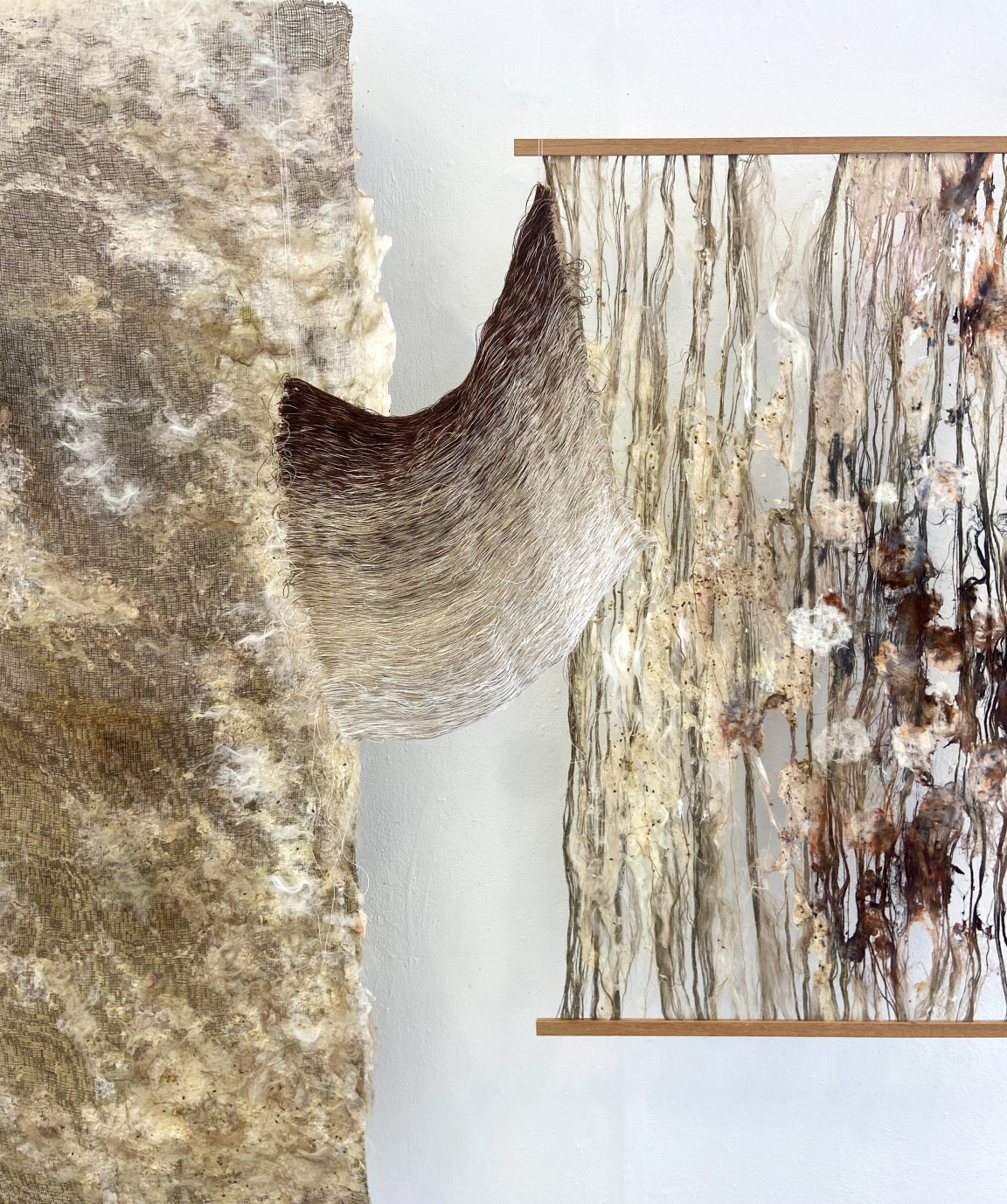
Libby Gallagher: The Promise of Dormancy

Libby Gallagher: The Promise of Dormancy
Hollie Harrison: Manchester School of Art
Hollie's graduate project embraced digital innovation within the textiles industry, while considering how this can push the boundaries of traditional surface-pattern design spurred by the issue of waste. "There is so much waste involved with traditional design and manufacturing processes - I decided to embrace the potential with 3D tools and technologies to overcome these barriers within my final year of study."
Collaborating with SwatchEditor, Hollie was able to showcase her print designs in the digital realm, exhibited as interactive phygital samples at New Designers, which could be recoloured or rescaled - all without using any physical material. As a result, the design process was made much more sustainable.
Hollie also had access to Stratasys 3D printing technology - at MMU's PrintCity - which allowed her to 3D print her designs directly onto material on a first-time-right approach.
"This project feels like just the beginning for me", Hollie comments. "It is exemplary that technological advancements are to be embraced by the textiles industry. Digital tools and technologies are enhancing and optimising traditional design and manufacturing processes, not replacing them.”
You can see more of Hollie's work via her portfolio, and on Instagram here.

Hollie Harrison: 3D printed textiles
Patty Van Den Elshout: ND Selects
We've spotted Patty Van Den Elshout's work before, but its impact was just as strong when it caught our eye at New Designers last month. A study on how light reacts on textured woven/passementerie surfaces - inspired by photography and the art of capturing light - the pieces only come to life when they are lit. Without light nothing is visible, but when you add light to the textured surface contrast starts appearing.
"The three-dimensional forms block the light’s path and change the way the shadows appear. Light makes the shadows dance. They move with the time of the day or change when different light sources are added", Patty explains.
The passementerie is made from paper. The woven piece is made from monofilament and cotton. And both are made at the Textile Museum in Tilburg. Patty has also designed a lamp in collaboration with Amy den Dekker.
Explore more of Patty's unique work at pattyvandenelshout.com.
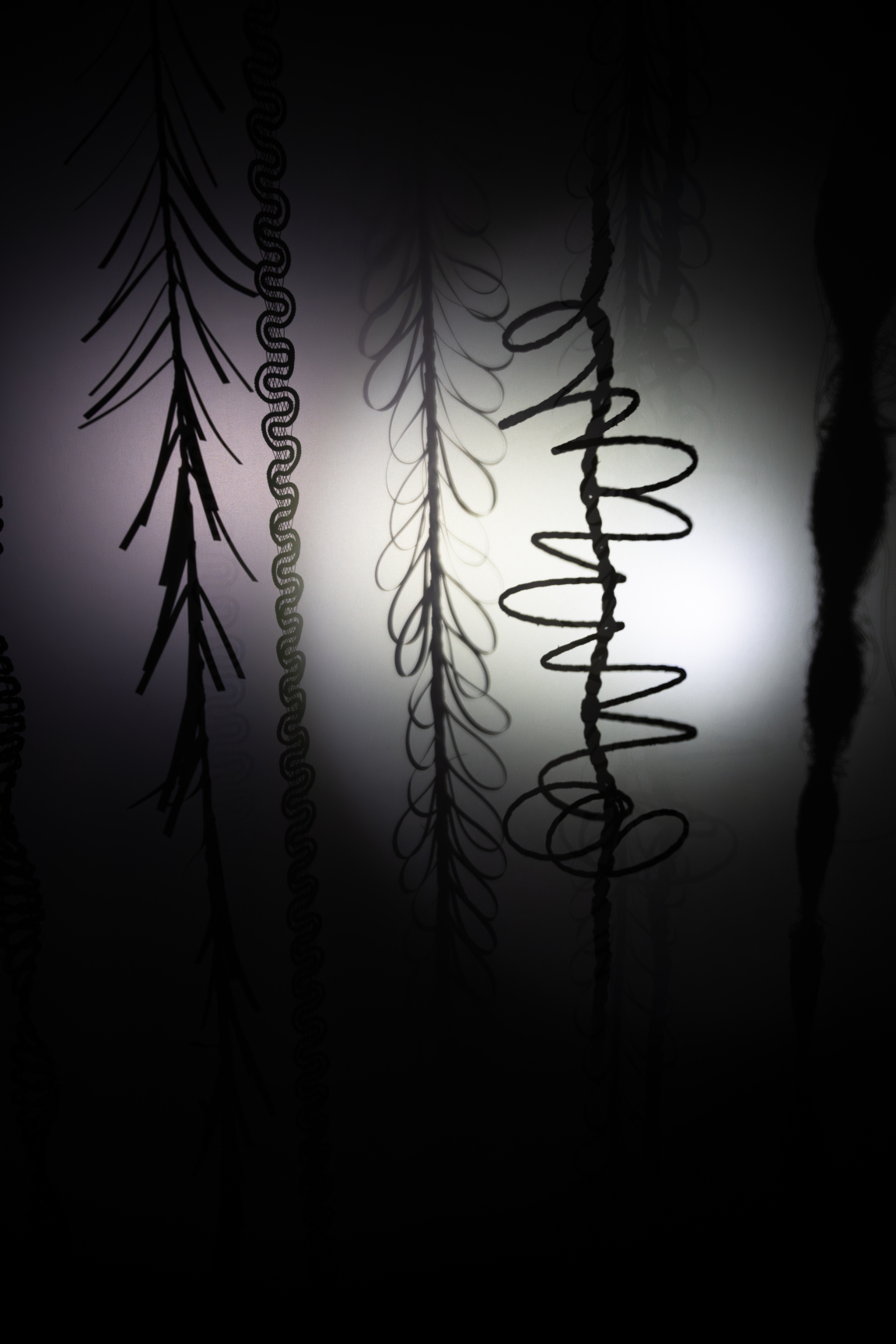
Patty Van Den Elshout: Shadow Dance
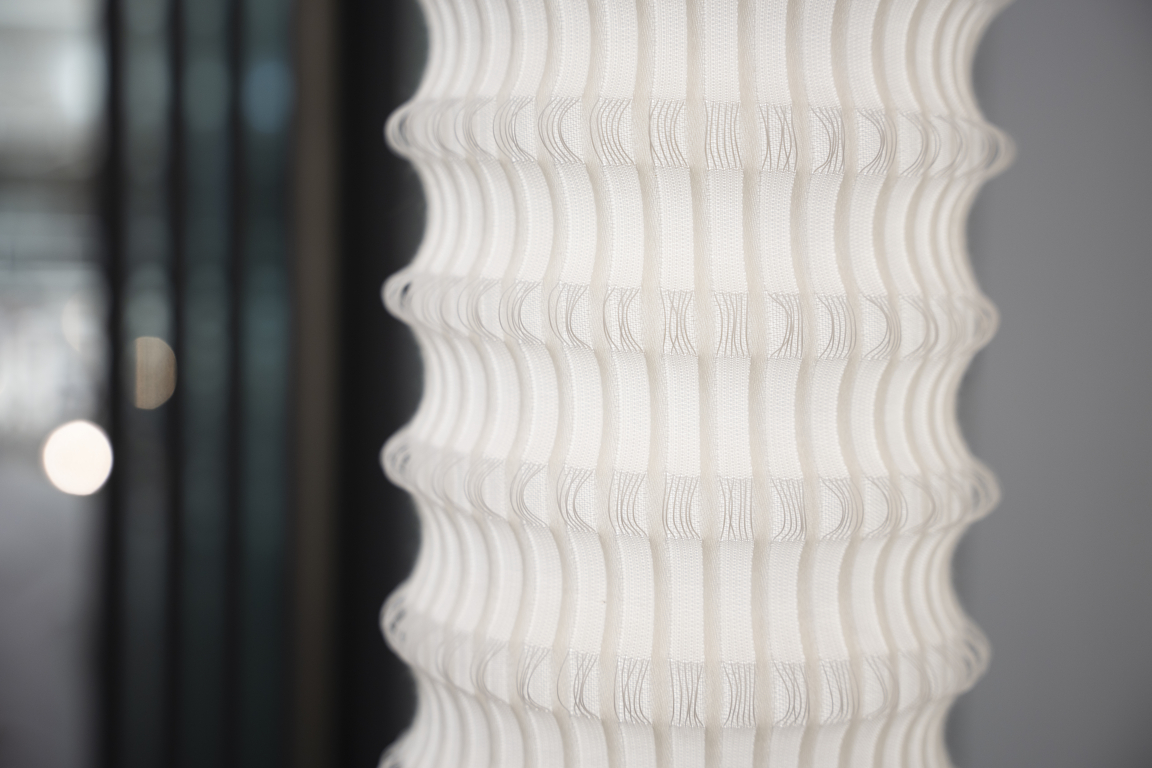
Patty Van Den Elshout: Shadow Dance

Patty Van Den Elshout: Shadow Dance
Part Two
Julia Brière: Royal College of Art
Julia Brière is a designer, researcher, and artist from the United States. Whilst on the Design Products MA at Royal College of Arts, Julia set about to redefining approaches towards materials for the built environment and future living through fusing biology and design.
Using bio-fabrication techniques, living systems, and circular economy principles, Julia creates materials, products, and structures which place emphasis on re-thinking our current material landscape.
Exhibited at this year’s New Designers, Saltscapes is a series of furniture that investigates salt as a building material. As global warming increases the abundance of sea salt, its versatile properties could prove to be viable material within manufacture. The project explores how to augment the physical, mechanical, and aesthetic properties of salt - creating new opportunities for its future applications.
Find Julia’s full portfolio here or follow her on Instagram.

Julia Brière: Saltscapes

Julia Brière: Saltscapes

Julia Brière: Saltscapes
Lily Orton: Falmouth University
Advocating for neurodiverse and inclusive design, Sound Symmetry by Lily Orton addresses over stimulation in the workplace and public study spaces - with an emphasis on designing for individuals with ADHD, autism, and sound sensitivity. Designed to make spaces more accessible, the project was profoundly personal to Lily, having ADHD herself.
The use of cork - a naturally sound dampening material - aims to reduce sound reflection in a space, tackling the source of auditory overstimulation. The CNC'd geometric shapes serve as a 3D maze, encouraging people to visually follow the tessellation-based patterns, instilling a sense of calm. Through both visual and tactile qualities, Sound Symmetry thoughtfully implements functional surfaces into the workplace, driven by neuroaesthetics.
Lily uses 100% cork for Sound Symmetry, the tessellated patterns achieved through milling. Considering form, function and sustainable material choices, Lily’s project is an example of empathetic design, focused on enriching the lives of individuals with sound sensitivities.
You can view more about Sound Symmetry here and find Lily on Instagram.

Lil Orton: Sound Symmetry

Lil Orton: Sound Symmetry
Izzy Kelly: Kingston School of Art
Furniture Design graduate from Kingston School of Art, Izzy Kelly took to exploring the waste-streams of the wood industry in her project, Fallen Furniture.
Using only locally sourced, pre-fallen timber, Fallen Furniture demonstrates how furniture designers can utilise the abundance of natural waste materials on our doorstep, in order to minimise the impact the furniture industry has on deforestation.
Izzy collects the timber from sites within a two-mile radius of the workshop, and the location. In addition to keeping production extremely localised, Izzy documents where each fallen tree is found using the What3Words app, which is engraved into the furniture. This allows users to trace their furniture back to the exact square metre it once grew.
Following one simple archetypal design, the uniqueness of the timber determines the aesthetic, dimensions, and function of the design.
You can find more information about Fallen Furniture, as well as Izzy’s business plan for the project, and the rest of her portfolio here. Plus, keep up with Izzy’s next venture on Instagram.

Izzy Kelly: Fallen Furniture
India Renshaw: Northumbria University
Featuring soft Ash and a muted palette, The Encircled Collection by India Renshaw is a series of objects for the home that draw inspiration from empowering imagery of goddesses, deities, and haloes. Luminescent white, circular shapes, and ornamental detailing centre the user - creating positions of empowerment, intimacy, and elevation.
Each piece is crafted using a combination of CNC machinery and hand-craft techniques, allowing for irregular forms whilst maintaining a delicate respect for the material. India produces objects with a feminine language that have a gentle presence within spaces and environments.
India’s online portfolio, documenting the creative process behind the Encircled Collection, is available to view on Instagram.

India Renshaw:

India Renshaw:
Josephine Drew: University of Edinburgh
Keen to address social and environmental challenges in her practice, Josephine Drew’s graduate project, Coop repurposes discarded eggshell waste from the University of Edinburgh’s catering services into a compostable bowl. Josephine describes herself as a multidisciplinary designer, specialised in product, UX and biomaterial development.
The Coop bowl re-diverts 120 waste eggshells from landfill in its construction, and is painted on the inside with a mixture of egg yolk, water and kaolin clay. Air drying over two days, Coop avoids the use of kilns. Josophine’s main aim with the project was to find both beauty and purpose through exploring the properties of waste materials.
You can find Josephine on Instagram and discover more about her sustainably-minded practice on her website.

Josephine Drew: COOP Photography credits: Gary Morrisroe
Danielle Middleton: Falmouth University
Tackling today's disconnect between humans and the natural world, Danielle Middleton's project, Terratiles harnesses the vegetative root structures that are mycelium to create cold-compostable, regenerative panels for interiors.
Material exploration is at the heart of the project, intending to elevate and discover the full potential of mycelium. This covers a scope of digital exploration, using a grasshopper algorithm to seamlessly turn nature textures into moulds that are CNC milled. The algorithm allows for endless possibilities within the design texture and form of the material's final outcome, and scalable production at industry level.
Danielle also explores colour finishes for mycelium, using only natural ingredients that do not impact the end of life of the raw material. Adding colour options opens the imagination for a wealth of different contextual uses, especially within interiors.
Advocating the use of biomaterials across a wide variety of applications, Danielle’s design practice encourages an bio-based and optimistic materiality for interiors and beyond.
Click here to learn more about Terratiles.

Danielle Middleton: Terratiles
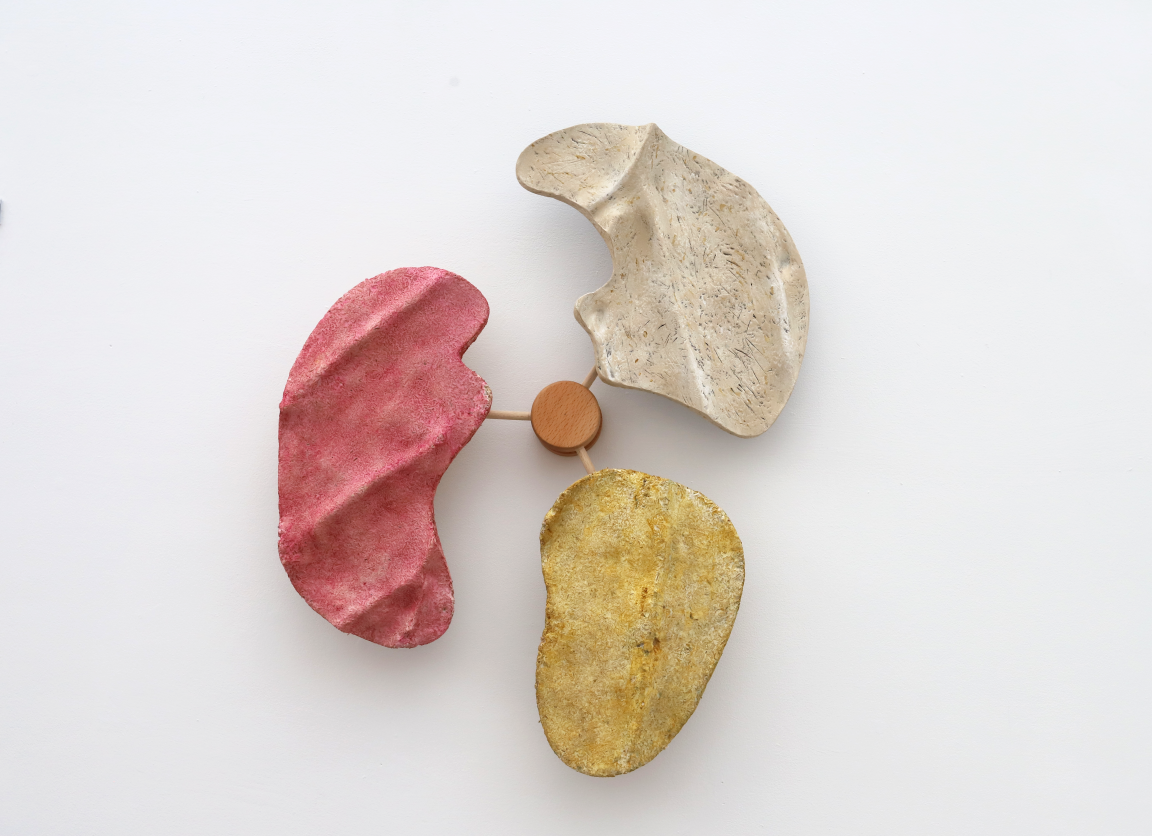
Danielle Middleton: Terratiles
Bethany Jean Grover: Nottingham Trent University
Bethany Jean Grover is the developer behind Cadence - an acoustic panelling system that translates any piece of music into its sensory representation, using 0.5 second snippets of audio.
These audio snippets are translated into layered colourful and textural units, able to visualise the varying audio layers and intricacies of any song, with over nine million different possible notation combinations. From baselines and instruments, to vocals, Candence is a multi-sensory experiment, allowing users to experience their favourite music in a new way.
The foundation of Cadence is a purpose-built software, the creation of which was the catalyst of inspiration to begin delving into this multi-sensory design topic. With sustainability being one of the project’s core considerations, the Cadence panels are made from a developing composite material; consisting of reclaimed wood shavings, and biodegradable adhesives.
Whether it's for music lovers in their homes, showrooms, or grand commercial halls, Cadence can be personalised to suit any environment - encapsulating the power of sound.
Bethany’s website can be viewed here, and she can also be found on Instagram.

Bethany Grover: Cadence
New Designers 2025 will take place 2-5 July, and 9-12 July. Find out more here.
All images used courtesy of the designers featured.


